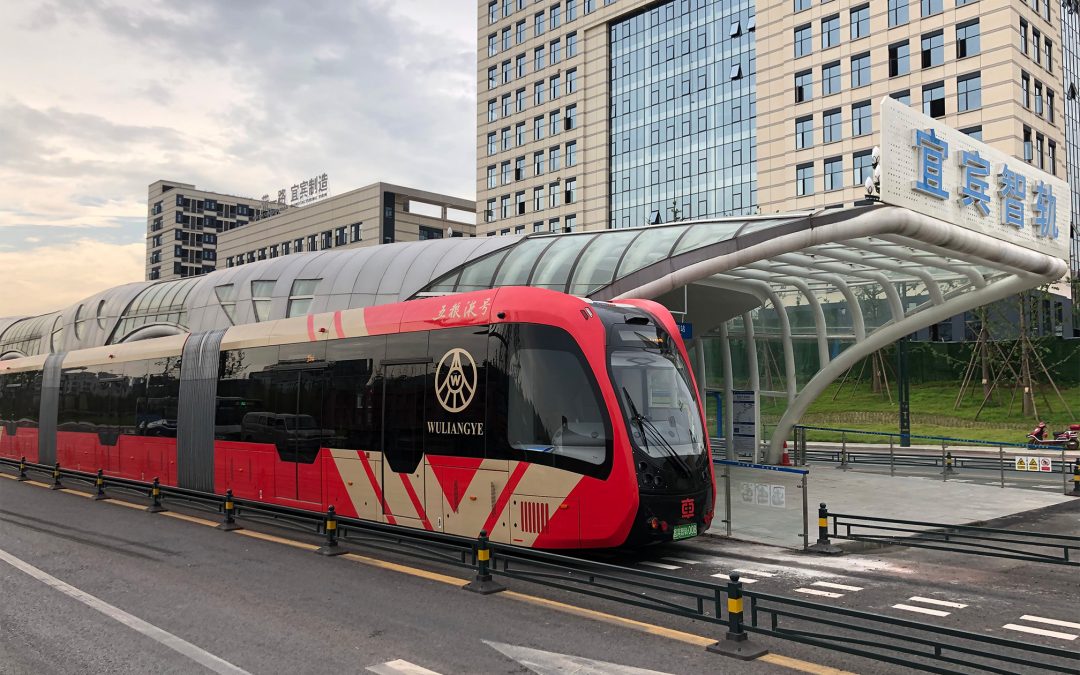Geelong delegation to tour manufacturing facilities in China next week
Representatives from the Committee for Geelong, Deakin University and Urbis will be heading off to China next week to meet with SRIG/CRRC, the manufacturers of a new form of automatic rapid transport currently being used in China.
The delegation will discuss the potential for a pilot of the ‘trackless tram’ to be deployed in Geelong using Deakin University’s park and ride route between Belmont and the Waterfront, which is a free service for staff and students.
According to the Committee for Geelong’s CEO Jennifer Cromarty, this new technology could be the solution to car parking issues in central Geelong and provide an attractor to people needing to get in and around the city for work.
“Soon there will be over 8,000 people commuting to Geelong to work in large organisations close to Gheringhap Street including Deakin University, WorkSafe, NDIA, TAC, Barwon Water and the City of Greater Geelong.
“Our roads are already becoming congested and frustrations with access to car parking are well documented. The City of Greater Geelong’s ‘Clever and Creative Vision’ includes aspirations to boost public and active transport to 50 per cent of trips – currently, it sits at less than nine percent. Trackless trams can impact this, by offering a convenient, easily-managed, popular and more sustainable alternative for travelling to, from and within central Geelong.
“Trackless trams are passenger vehicles engineered to travel on specific routes along the road and are a proven transport option in China. The technology offers an exceptional alternative for cities that experience challenges in retro-fitting light rail infrastructure and encouraging sustainable transport choices. The trackless tram rolling stock reflects the look and feel of the E Class trams in Melbourne but have a smoother, smarter and more sustainable operating system,” Ms Cromarty said.
Deakin’s Chief Operating Officer Kean Selway said trackless trams had a demonstrated ability to efficiently transport large populations of people.
“We are currently in discussions with other organisations in Geelong who are interested in accessing our park and ride service, which currently clocks up 120,000 staff and student commutes between our campuses each year. The expanded reach of our service would certainly have a positive impact on congestion in the city,” Mr Selway said.
“Deakin is committed to making Geelong a great place to live, work and learn. We want to encourage sustainable transport options for our staff and students, as well as the communities we serve. By trialling this cutting-edge technology, we can ensure Geelong is leading the way when it comes to innovative transport solutions, and potentially inform the introduction of trackless trams to other parts of Australia.”
Breton Fleming, Director of Planning at Urbis said that the trackless trams have the potential to revolutionise accessibility to high quality public transport in areas typically under serviced.
“Having seen the technology on-the-ground, I believe that trackless trams offer the potential to deliver an equivalent light rail service at a fraction of the cost. The trams have a similar axle weight to buses, B Double trucks and semi-trailer trucks and so, unlike light rail, they can be accommodated on the existing road network without significant infrastructure investment. There is a real opportunity for these trams to be a game-changer in regional cities and the newer suburbs, the latter of which often lack quality transport options” Mr Fleming said.
Urbis is working with Deakin University and the Committee for Geelong as the key conduit for conversations with the manufacturers of the trackless trams CRRC/SCIG via Trec.
Benefits of trackless trams
- No rail infrastructure is necessary; the tram uses existing streets
- No overhead wires are required as the tram is battery powered
- Research shows that trams are a more popular transport choice to buses
- Trams operate quietly, smoothly and efficiently, utilising a train chassis as opposed to a bus chassis.
- Possibility for trams to run from green power
- A 10-minute charge can last up to several hours
- High capacity, with space for around 280 passengers in a three-carriage configuration
- Trams are highly manoeuvrable, with a turning circle equivalent to a bus
- As a low floor vehicle (330mm) trams are DDA accessible
- Trackless Trams are cost-effective:
- $3 – $4 million for three carriage compared to an E class tram at $10 million plus ‘ supporting infrastructure
- Operating cost are equivalent to a bus
- Configurable rolling stock includes two-four carriages plus internal fit-out options
- Potential for driverless operation
- Equivalent width and length of standard light rail
- 70 km/h maximum travel speed
- Manufactured by CRRC, a global business headquartered in China with a presence in Melbourne
